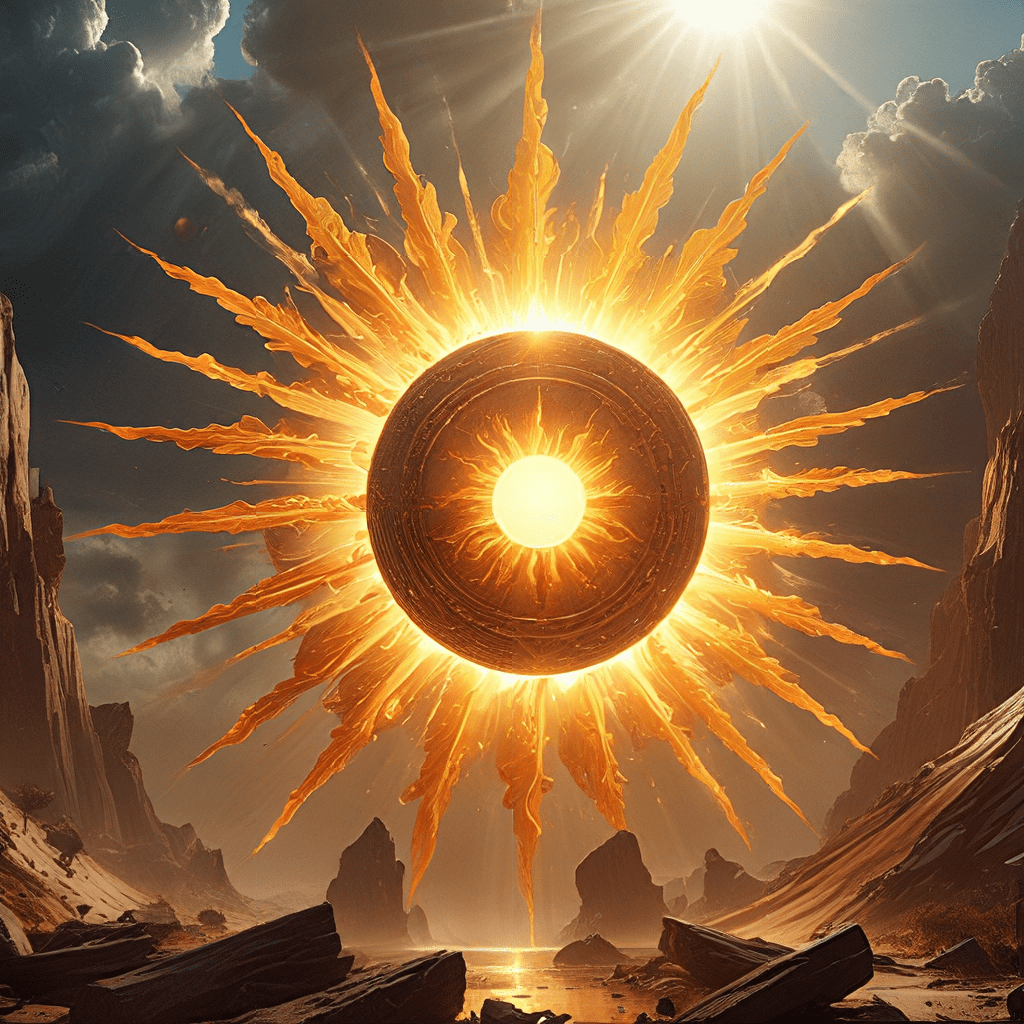The Power of the Sun: The Divine Force in the Universe in the Creation Myth
The sun, a radiant orb that illuminates our world, holds a special place in the hearts and minds of humanity throughout history. In ancient Egypt, the sun was not merely a celestial body; it was worshipped as a divine force, a source of life and creation. The sun god, a central figure in Egyptian mythology, played a crucial role in shaping the cosmos and bringing forth the world as we know it. The captivating creation myth of ancient Egypt, steeped in divine power and cosmic drama, revolves around the sun as the very essence of existence.
1. Introduction: The Sun as a Central Figure in Egyptian Mythology
In ancient Egypt, the sun was much more than a celestial body— it was a life-giving force, an embodiment of divine power, and a central figure in their religious beliefs and practices. The sun’s daily journey across the sky symbolized the cycle of life, death, and rebirth, deeply resonating with the Egyptians’ understanding of the world and their own existence. The sun god, worshipped under various names and forms, was considered the creator of the universe and the ruler of the cosmos. His role in creation myths permeated every aspect of Egyptian life, influencing their art, architecture, and daily rituals.
2. The Creation Myth: From Darkness to Light
The Egyptian creation myth tells the story of how the universe arose from chaos and darkness. In the beginning, there was only a vast expanse of primordial waters called “Nun,” representing nothingness and potential. From this chaotic void, Atum, the sun god, emerged. He created himself, a powerful act of self-generation, signifying his ultimate divine authority. Atum, the self-created being, brought order and light to the universe, separating the sky from the earth and establishing the foundation for all existence. This transformative act, symbolized by the rising sun, marked the beginning of time and the birth of the cosmos.
3. Atum: The Self-Created God
The concept of Atum, the self-created sun god, holds deep significance within the Egyptian creation myth. Atum’s self-generation, a powerful act of creation from nothingness, represented the ultimate source of divine power and the origin of all things. This act of self-creation was often associated with the “ben-ben” stone, a sacred stone that symbolized the primordial mound from which Atum emerged. The “ben-ben” stone, representing stability and solidity, served as the foundation for the creation of the world, an enduring symbol of Atum’s divine power.
4. Heliopolis: The City of the Sun
Heliopolis, a prominent city in ancient Egypt, played a pivotal role in the worship of the sun god. Known as the “City of the Sun,” Heliopolis was the center of sun worship and the birthplace of the most influential creation myth in Egyptian mythology. The Heliopolitan creation myth, centered around the sun god Atum, established a complex pantheon of nine gods, the Heliopolitan Ennead, representing various aspects of the universe. These gods, born from Atum, included Shu (air), Tefnut (moisture), Geb (earth), Nut (sky), Osiris (god of the underworld), Isis (goddess of magic), Seth (god of chaos), Nephthys (goddess of mourning), and Horus (god of kingship). This complex web of divine relationships established the order of the cosmos and represented the interconnectedness of all things in the universe.
5. Ra: The Divine Sun Disk
As the sun god’s myth evolved, Atum transformed into Ra, a more powerful and multifaceted form. Ra, the divine sun disk, became the cosmic ruler, traversing the sky in his solar barque, a magnificent boat that carried him through the heavens. Ra’s journey across the sky symbolized the cycle of life, death, and rebirth, reflecting the sun’s daily journey from dawn to dusk. Just as the sun rises in the east, bringing light and life to the world, it sets in the west, symbolizing the inevitable cycle of death and renewal. The sun’s journey across the sky represents the eternal cycle of life, death, and rebirth, a fundamental concept in Egyptian mythology.
6. The Eye of Ra: The Power of the Sun’s Gaze
The Eye of Ra, a powerful symbol within Egyptian mythology, represents the sun god’s energy and force. This celestial eye, often depicted as a fiery orb or a fierce goddess, embodies the sun’s destructive power and its ability to bring forth both life and destruction. The Eye of Ra took on various forms, including Sekhmet, a fierce lion goddess representing the sun’s scorching heat, Hathor, a goddess associated with love, beauty, and motherhood, and Wadjet, a cobra goddess symbolizing protection and power. These diverse forms of the Eye of Ra demonstrate the sun god’s multifaceted nature and his ability to manifest both creative and destructive power in the universe.



